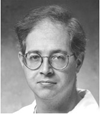When it comes to Computerized Health Information Technology (CHIT), also known as the Electronic Medical Record (EMR), the pen is mightier than the computer.
Why? Because regulators and billing professionals seek comprehensive documentation, and believe that more information generates a clearer, more useful picture of what is happening (and has happened to) a particular patient. Malpractice attorneys and quality experts lust for this level of detail, as it will afford them the opportunity to point out the myriad failings of the health care system, and serve as a perch from which they can direct the continuous improvement in the quality of care. Patients, anxious that critical elements of their medical story might be lost or unappreciated, are anxious that every caregiver have complete and total awareness of the details and trajectory of their medical history. While noble, this aspiration is part of the problem with CHIT, and perhaps the major obstacle to its being a solution to any problem in medicine.
The relentless quest for higher resolution of detail has driven a relentless increase in the detail provided. Unfortunately, the coding available is often a poor fit for the clinical information (a mild dilation of the aorta classifies out as an aortic aneurysm, the former something that bears minding over decades, the later a potentially life threatening medical problem that commands close follow-up). Worse, much of this coding is generated by administrators remote from the bedside, and who typically are deprived of the information required to code accurately. The imperative to code something, anything, invariably trumps accuracy, and little inaccuracies creep in to the documentation in droves at this point. Please note the shift in language from record to documentation in the last sentence. Only outsiders regard such documentation as containing useful information about a patient; you will likely never meet a healthcare provider who has this view. You will never hear ‘Could you please request Mr H’s medical and billing records from his hospitalization at memorial hospital?’ Not gonna happen. In fact, practitioners know that there is more noise than information in this documentation, which is why they do not and have never had any interest in it. It is almost certainly the case that the cost of improving the accuracy of this documentation far surpasses any benefit that might accrue to the patient. The fantasy that you can monitor the quality of health care from this perch, or improve it, is, well, a fantasy. This has not stopped major players from falling for this, hook, line, and sinker:
http://www.boston.com/news/nation/washington/articles/2009/04/13/electronic_health_records_raise_doubt/?page=full
(this is a news story of how the incorporation of such billing information completely corrupted a Google medical record).
Many EMRs read like Madlibs(for those of you old enough to remember what they are), because they are in fact cut-and-pasted snippets of data from other parts of the EMR, put in place to fulfill some billing documentation requirement or some regulatory imperative. Free text annotation is often discouraged, and frequently impossible to juxtapose next to the appropriate snippet of information in the chart. Some systems make it very difficult to generate any kind of free form documentation, and consequently critical events in the course of a hospitalization are never documented. In most or all hospitals, practitioners have developed a shadow chart that incorporates all of the critical information that practitioners need to know to care for a patient. The existence of these shadow charts has been driven by the hijacking of the medical record for billing and regulatory purposes. The creation of these charts represents additional effort for everyone who directly participates in the care of patients. That such busy people are willing to do this is striking. Little you want to know is in the chart; everything you need to know is in the shadow chart.
http://content.nejm.org/cgi/content/full/358/16/1656
(this is a nice piece from the NEJM about the pitfalls & failures of the current crop of EMRs. The authors describe the practitioner driven to keeping note-cards on his patients)
http://ukpmc.ac.uk/articlerender.cgi?artid=1023477
(this is a manuscript about sign-out sheets – the most common form of shadow chart – I am a co-author).
Why is the pen mightier than the EMR? Before the modern era, the chart contained whatever information practitioners caring for the patient thought would be useful to others, either at present, or in the future for review. Writing with a pen is effortful and time consuming. It forces the writer to abstract and extract critical information, and to synthesize whenever and wherever possible. Information is only duplicated if it is essential to the story that is being told. The pen permits the writer to organize a note as they see fit, incorporating information wherever it makes sense to them. If a picture saves a thousand words, then a sketch is likely to be incorporated into the note. Notations in the medical record call the readers attention to what the writer thinks is important and why it is deemed so. The exclusion of extraneous information is as critical as the inclusion of crucial information. Charts that are a concatenation of such notes are exceptionally useful in telling the stories of patients, but are a thing of the past (sadly, an increasingly remote past). I have an ICU colleague who writes 3-7 sentence notes about patients. His notes are as brilliant as they are concise, and everyone who reads them admires them, and envies his ability. In almost every instance, his notes are the only thing worth reading in the chart. While such brevity is possible with the EMR, it is not cultivated by it. Worse, synthesize seems to be an unnecessary undertaking whose execution is poorly supported by the EMRs of the present.
How will we know an effective EMR when we see one? Easy. The story of the patient will not merely discoverable, but self-evident. Practitioners will cease making shadow-charts, because they will no longer be worth the effort. Stalinist regulation to compel this might create the appearance of success, but only in the minds of the regulators and administrators who generated it. Sharp end practitioners would be profoundly hampered by any such mandate. Indeed, any regulation at all of shadow medical records is likely to significantly hamper medical care, which is why almost no one studies them, and why there is little or no discussion of them outside of the community of practitioners.
The fantasy is that the chart is the repository of all of the facts of a patients care. The reality is that the chart should tell the story of a patient’s care, clearly and concisely. Anyone who reads it should come away with the patient’s story, not a mountain of seemingly vaguely related facts, as is the case with the EMRs of today. The pen promotes this, the EMR of the present actively obstructs it. For now, the pen is indeed mightier than the EMR.
 Mitch Keamy is an anesthesiologist in Las Vegas Nevada
Mitch Keamy is an anesthesiologist in Las Vegas Nevada
 Andy Kofke is a Professor of Neuro-anesthesiology and Critical Care at the University of Pennslvania
Andy Kofke is a Professor of Neuro-anesthesiology and Critical Care at the University of Pennslvania
 Mike O'Connor is Professor of Anesthesiology and Critical Care at the University of Chicago
Mike O'Connor is Professor of Anesthesiology and Critical Care at the University of Chicago
 Rob Dean is a cardiac anesthesiologist in Grand Rapids Michigan, with extensive experience in O.R. administration.
Rob Dean is a cardiac anesthesiologist in Grand Rapids Michigan, with extensive experience in O.R. administration.
brilliant.
Posted by: Mitch Keamy | April 14, 2024 at 05:24 PM
I spent 4 hours yesterday in a session devoted to training on our new EMR. I have several problems with this. 1) The longer I sat there, the more it felt like the whole point of the software was not optimizing clinical care, but rather optimizing documentation for the purposes of billing and compliance with gov't mandates. 2) Even Epic admits they're at least a decade away from the kind of interconnectivity from hospital-to-hospital that is the selling point behind all this anyway. 3) the whole thing seems to be designed to shift clerical work from the lowest-paid person in the hospital (the $8/hr clerk) to the second-highest (the physician; the highest-paid, of course, being the CEO and 17 executive VPs). Why on earth should I have to figure out all the stupid clicks, buttons, and protocols for ordering an Xray? Will getting rid of all the clerks reall save that much money? What is the REAL movement going on behind all this?
Posted by: Chris | April 23, 2024 at 01:48 PM
That may be true for your generation, Prof. O'Connor, but not so much for those coming through medical school now. The texting and "tweeting" generation is much more used to typing what you are used to penning.
As to Chris's question about what's really going on here, it's two things:
1. Lotsa taxpayer dough going to the IT folks who supported Obama early and often, and
2. By passing a bill on this, the administration can claim they've "reformed" the health care system, without ever addressing what really needs to change--insurance company administrative costs and profits.
Carolyn Kay
MakeThemAccountable.com
Posted by: Carolyn Kay | May 18, 2024 at 05:09 AM
Carolyn,
Prof. O'Connor's point remains regardless of the method used to enter free-form text.
Posted by: Kirk Parker | May 18, 2024 at 08:22 AM
Kirk,
Is it your position that today's texters, who almost never pick up a pen, write more carefully when they pick up a pen?
Carolyn Kay
MakeThemAccountable.com
Posted by: Caro | May 18, 2024 at 03:34 PM
Carolyn: The pen requires its operator to distill a mountain of information down into a concise and coherent story. The cut-and-paste function of the computer tends to generate replication of huge amounts of information, and almost no higher level synthesis. This synthesis is critical to helping caregivers understand what is happening with a patient. One of the differences between trainees and experienced practitioners is that experienced practitioners can tell a very complex story very concisely, and the way they tell the story is very informative to other practitioners. The Mad-Lib nature of many EMR entries is the antithesis of this. It's not that the EMR obstructs this, it's that it doesn't cultivate it.
Posted by: Mike O'Connor | May 19, 2024 at 02:54 PM
Very interesting to know about shadow charts. Thanks for the info.
TG
Posted by: Thomas Goldman | November 19, 2023 at 10:15 AM
There are extremely powerful applications of EMR, for example in trauma centers and ICU where decision support systems can write default orders that are based on lab and biometric data. For example, Intermountain Health Systems about 15 years ago did a study that accidentally showed how powerful EMR can be when used correctly.
Posted by: Allscripts | November 21, 2023 at 05:23 AM
Yeah. You cannot tell that a system is not good until you try it.
-nj
Posted by: pain management emr | February 23, 2024 at 08:09 PM
This synthesis is critical to helping caregivers understand what is happening with a patient. One of the differences between trainees and experienced practitioners is that experienced practitioners can tell a very complex story very concisely, and the way they tell the story is very informative to other practitioners.
This is very nice to read ...i like this artcle very much...thanks for this beautiful information....
Matrimonial
webdesigner
Top sites
Posted by: milton | July 28, 2024 at 04:39 AM
Nice post about EMR.
EMR systems can be a complex set of connected systems with significant data collection points or it can be a simple system that collects basic data needed to record and associate health information with a specific patient.
Thanks.
Posted by: jessi | October 09, 2024 at 04:58 AM